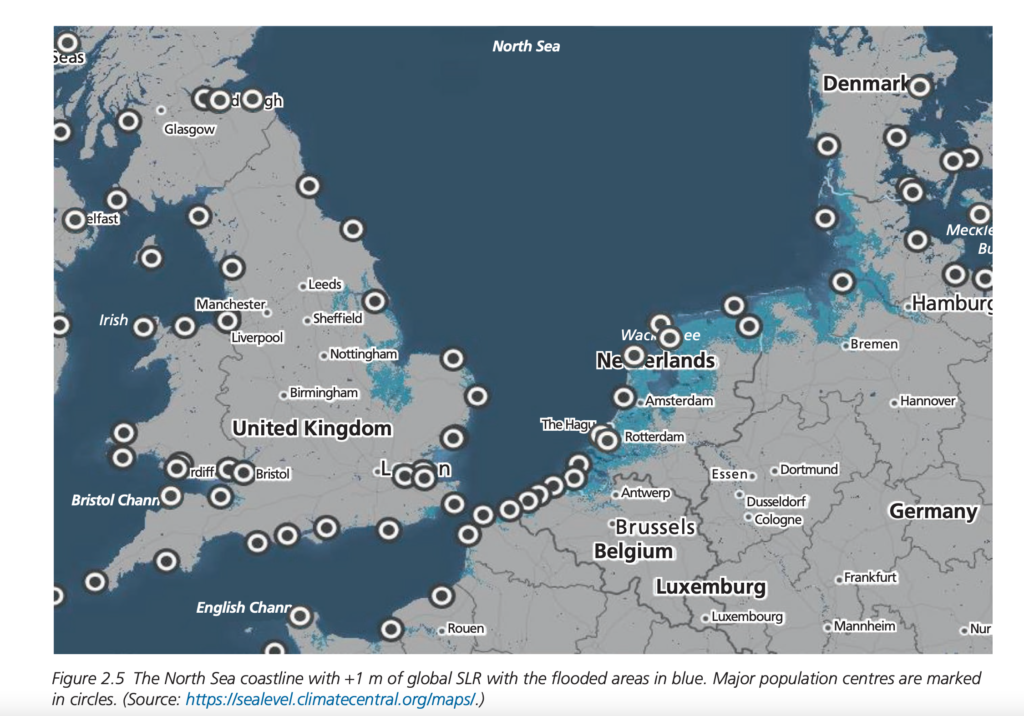Asbjørnsen, Helene (2020-12-10). Mechanisms and pathways of ocean heat anomalies in the Arctic-Atlantic region (PhD thesis, University of Bergen, Bergen, Norway). https://bora.uib.no/bora-xmlui/handle/11250/2712025 .
Summary: Along the Atlantic water pathway, from the Gulf Stream in the south to the Arctic Ocean in the north, variability in ocean heat content is pronounced on interannual to decadal time scales. Ocean heat anomalies in this Arctic-Atlantic sector are known to affect Arctic sea ice extent, marine ecosystems, and continental climate. However, there is at present neither consensus nor any complete understanding of the mechanisms causing such heat anomalies. This dissertation obtains a more robust understanding of regional ocean heat content variability by assessing the mechanisms and pathways of ocean heat anomalies in the Arctic-Atlantic region. The results are presented in three papers.
The first paper investigates the link between a variable Nordic Seas inflow and large- scale ocean circulation changes upstream. Using a global, eddy-permitting ocean hind- cast together with a Lagrangian analysis tool, numerical particles are seeded at the Iceland-Scotland Ridge and tracked backward in time. Water from the subtropics sup- plied by the North Atlantic Current (NAC) is found to be the main component of the Nordic Seas inflow (64%), while 26% of the inflow has a subpolar or Arctic origin. Different atmospheric patterns are seen to affect the circulation strength along the advective pathways, as well as the supply of subtropical and Arctic-origin water to the ridge through shifts in the NAC and the subpolar front. A robust link between a high transport of Arctic-origin water and a cold and fresh inflow is furthermore established, while a high transport of subtropical water leads to higher inflow salinities. The second paper investigates the mechanisms of interannual heat content variability in the Norwegian Sea downstream of the Iceland-Scotland Ridge, using a state-of-the-art ocean state estimate and closed heat budget diagnostics. Ocean advection is found to be the primary contributor to heat content variability in the Atlantic domain of the Norwegian Sea, although local surface fluxes also play an active role. Anomalous heat advection furthermore depends on the strength of the Atlantic water inflow and the conditions upstream of the ridge. Combined, the two papers demonstrate the importance of gyre dynamics and large-scale wind forcing in causing variability at the ridge, while high- lighting the impacts on Norwegian Sea heat content downstream.
For the third paper, warming trends in the Barents Sea and Fram Strait are explored, and, thus, the mechanisms underlying recent Atlantification of the Arctic Ocean. The Barents Sea is seen to transition to a warmer state, with reduced sea ice concentrations and Atlantic water extending further poleward. The mechanisms driving the warming are, however, found to be regionally dependent and not stationary in time. In the ice- free region, ocean advection is found to be a major driver of the warming trend due to increasing inflow temperatures in the late 1990s and early 2000s, while reduced ocean heat loss is contributing to the warming trend from the mid-2000s and onward. A considerable upper-ocean warming and a weakened stratification is seen in the ice- covered northwestern Barents Sea. However, in contrast to what has been previously hypothesized, the results do not point to increased upward heat fluxes from the Atlantic water layer to the Arctic surface layer as the source of the upper-ocean warming.
The supply of Atlantic heat to the Nordic Seas and the Arctic Ocean has been scrutinized using both Lagrangian methods and heat budget diagnostics. Combined, the three papers demonstrate the important role of ocean heat transport in causing regional heat content variability and change in the Arctic-Atlantic region. A better understanding of interannual to decadal ocean heat content variability has implications for future prediction efforts, and for how we understand the ocean’s role in ongoing and future climate change.
Link to publication. You are most welcome to contact us or the corresponding author(s) directly, if you have questions.



